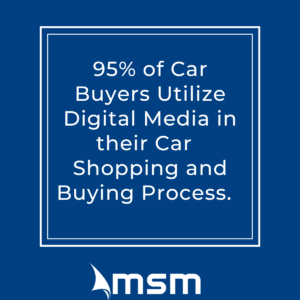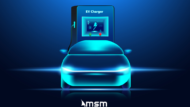Car sales are back on the rise. After a few years of decline, 2022 has seen an increase of over 6% in new car sales and an increase of over 3% since summer. And, for USA auto manufacturers, the news is optimistic, with GM reporting third-quarter sales up 24%.
Part of the increase in sales was due to the pandemic coming to an end. However, despite the rise of online car dealerships in which consumers could purchase cars from home during the pandemic, consumers were still buying at a much lower rate. There are several reasons why car sales were down during the pandemic, and many of those were new and unique to the past few years, but the reasons motivating car buyers as we head into 2023 are the same as they were pre-pandemic, and even the same as 10+ years ago.
What Motivates Car Buyers
Despite car dealerships in the USA collectively spending an average of around $10 billion per year on advertising to attract would-be car buyers, the two main reasons for consumers buying cars have always remained the same: Need and Product.
Need for a Car
This might seem like it should go without saying, but having a need for a car is a fundamental motivation that dealerships often skip past in their marketing. Instead, most dealerships spend their marketing dollars focused on new cars, new car features, and special financing and pricing. However, when you break it down, the primary motivator for many car buyers is simply that they need personal transportation, and auto dealerships can provide that.
The need for a car is often the main motivating factor for young buyers. And, young buyers are leading the charge in the increase of car sales. But, does this mean that the type of car and features aren’t crucial for buyers whose primary motivation is fulfilling their need for transportation? No. In fact, most will have a secondary factor nearly equal to their primary buying motivator, such as a type of car. However, their primary motivating factor to buy can’t be ignored.
While fulfilling an immediate need for transportation is the primary motivating factor, getting a car as quickly as possible is typically the most significant selling point for modern buyers. In fact, these buyers are notorious for falling victim to sub-par used vehicles, or high-interest rates and unfavorable purchasing terms, if it means they can have the keys to the vehicle quickly.
For auto dealerships to be well-positioned to fulfill the needs of modern buyers whose primary motivation is to fulfill their transportation needs quickly, it is important to be able to make the buying process as quick and smooth as possible. Something as small as being unable to quickly find the keys to a vehicle for the buyer to test drive, or your printer being out of ink and unable to print a required form may cause this prospective buyer to walk.
In addition, a dealership should do all it can to speed up the car buying process, and have quick, pre-planned solutions, to common car buying hiccups such as financing or insurance issues.
The Product
The product still matters. And, for buyers over 35, the product matters the most. Sure, a $0 down payment special offer, or $500 off MSRP might get the buyer in the door, but typically the product was the primary motivating factor.
 For salespeople, this is excellent news. When customers show up at your lot, likely, they’ll already know what they are looking for. For anyone reading this that was in auto sales 20+ years ago, you’ve definitely seen this shift in buying motivation. Consumers of the past would come to auto dealerships as their first step in the buying process, and they’d be open to a wide variety of vehicle options. But today, over 75% of car buyers start their car buying process online, and 95% of buyers utilize digital media in their buying process. The result is that most buyers arrive at a dealership knowing what they want to buy.
For salespeople, this is excellent news. When customers show up at your lot, likely, they’ll already know what they are looking for. For anyone reading this that was in auto sales 20+ years ago, you’ve definitely seen this shift in buying motivation. Consumers of the past would come to auto dealerships as their first step in the buying process, and they’d be open to a wide variety of vehicle options. But today, over 75% of car buyers start their car buying process online, and 95% of buyers utilize digital media in their buying process. The result is that most buyers arrive at a dealership knowing what they want to buy.
What Does the Product Being the Main Motivation Factor Mean for Auto Dealerships?
There are two options for auto dealerships today: Offer a wide selection of cars to appeal to a large audience, or become the go-to place for specific makes or models of cars.
Offering a Wide Selection of Vehicles
Online auto dealerships, such as CARVANA and CarMax, attract buyers in part because of their vast ad budgets, as well as being leaders at pioneering online car buying, but also because they offer a wide variety. When dealerships offer a wide variety of vehicles, anyone looking for a car is a prospective customer, no matter their buying motivation or type of car of choice.
The downside to offering a wide selection is that it is challenging to compete, especially if you’re a local auto dealership, with the ad budget of the likes of CarMax. And, you might cast such a wide net that you struggle to reach prospects, and when you do that, you may fail to give buyers a compelling reason to purchase from you.
Offering a wide selection of vehicles does bring a larger potential customer base to dealerships. The key to success, if you favor a car inventory with a wide selection, is to be aware of your numbers and analytics of which cars are of most interest to your potential buyers. One tip is that when running online ads, run split tests with different vehicles in the ads and see which type of car gets more clicks. If a particular car is drawing more interest, you might want to focus more ad dollars on that specific car and have more in your inventory.
Specializing in Specific Vehicles
We mentioned above that modern car buyers start their buying process online and go to auto dealerships with a specific car in mind to purchase. In fact, 16% of people who buy a car at a dealership do not even take a test drive. So if you’re an auto dealership that specializes in one type of car, be it carrying only Ford automobiles, only Teslas, or only trucks, the majority of the people who walk through your door will be much further along in the buying process, and you’ll close a higher percentage.
However, there are some negatives to specializing in one, or only a few, types of vehicles. The biggest negative is that your potential car-buying audience is smaller. The good news is, when your audience is more limited, you can get much more specific in your targeted marketing. The key is to get your auto dealership brand to be associated with the type of vehicle you specialize in selling in the minds of your prospective buyers. You need to dive deep into what motivates buyers to prefer the kind of vehicle you offer, and focus your marketing efforts on those motivating factors.
In a future blog post, we will dive deeper into buyers’ motivations, such as the role of the salesperson, the auto dealership’s reputation, and how the price of the car motivates a buyer to purchase. It is important to reflect back to the basics: auto dealerships are fulfilling a need for transportation. In fulfilling the need for that transportation, the product matters the most.
Now more than ever, when customers walk into a dealership, they know which car they want, and they want the dealership to facilitate that purchase as quickly and seamlessly as possible. Therefore, anything an auto dealership can do to increase the efficiency of their dealership, such as having the right dealer partners that enable dealerships to focus time on more critical tasks, or business and office solutions to improve efficiency, will allow auto dealerships to meet the motivations and fulfill the needs of modern buyers.







